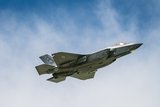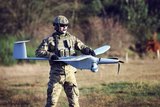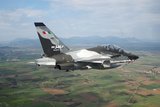DARPA strives for the future helicopter pilot
Northrop Grumman's AI technology will help pilots to see more, as shown by the above depiction. (Image: Northrop Grumman)
Northrop Grumman has been awarded a contract from the US DARPA’s Perceptually-enabled task Guidance Program to develop a prototype AI assistant.
The prototype will be embedded in an AR headset to help rotary pilots perform expected and unexpected tasks.
The company, in partnership with the University of Central Florida, will develop an operator and context-adaptive reasoning intuitive assistant (OCARINA) that will support UH-60 Blackhawk pilots.
Erin Cherry, senior autonomy program manager, Northrop Grumman, stated: ‘It will help teach new tasks, aid in the recognition and reduction of errors, improve task completion time and help to prevent catastrophic events.’
Currently, simple warning systems are the most common means for aiding a rotorcraft aircraft, such as auditory alerts to increase altitude.
However, these warning systems are limiting and can induce unanticipated cognitive burdens on pilots. In fact, studies have shown that inattentional blindness to such warnings can occur.
DARPA’s PTG program aims to provide users with wearable sensors which allow the AI assistant to provide feedback and guidance through speech and aligned graphics.
This decision follows a series of UH-60 crashes in 2021, including one which occurred in Idaho on 2 February and another which occurred in New York state on 20 January.
More from Air Warfare
-
![Portugal signals interest in establishing A-29N final assembly line]()
Portugal signals interest in establishing A-29N final assembly line
As the launch customer for the NATO-configured variant, Portugal also took delivery of the first five A-29N aircraft from its order for 12, placed in 2024.
-
![Podcast: Critical Care episode 5 - Sustaining Europe’s frontline from Heidelberg]()
Podcast: Critical Care episode 5 - Sustaining Europe’s frontline from Heidelberg
As Europe ramps up defence investment in the wake of the Ukraine crisis, the spotlight is turning to how nations sustain their growing fleets.
-
![Leonardo signs contract on Austria’s M-346 aircraft order]()
Leonardo signs contract on Austria’s M-346 aircraft order
The first of the 12 M-346 aircraft are expected to be delivered to the Austrian Air Force by 2028, according to the company.





















